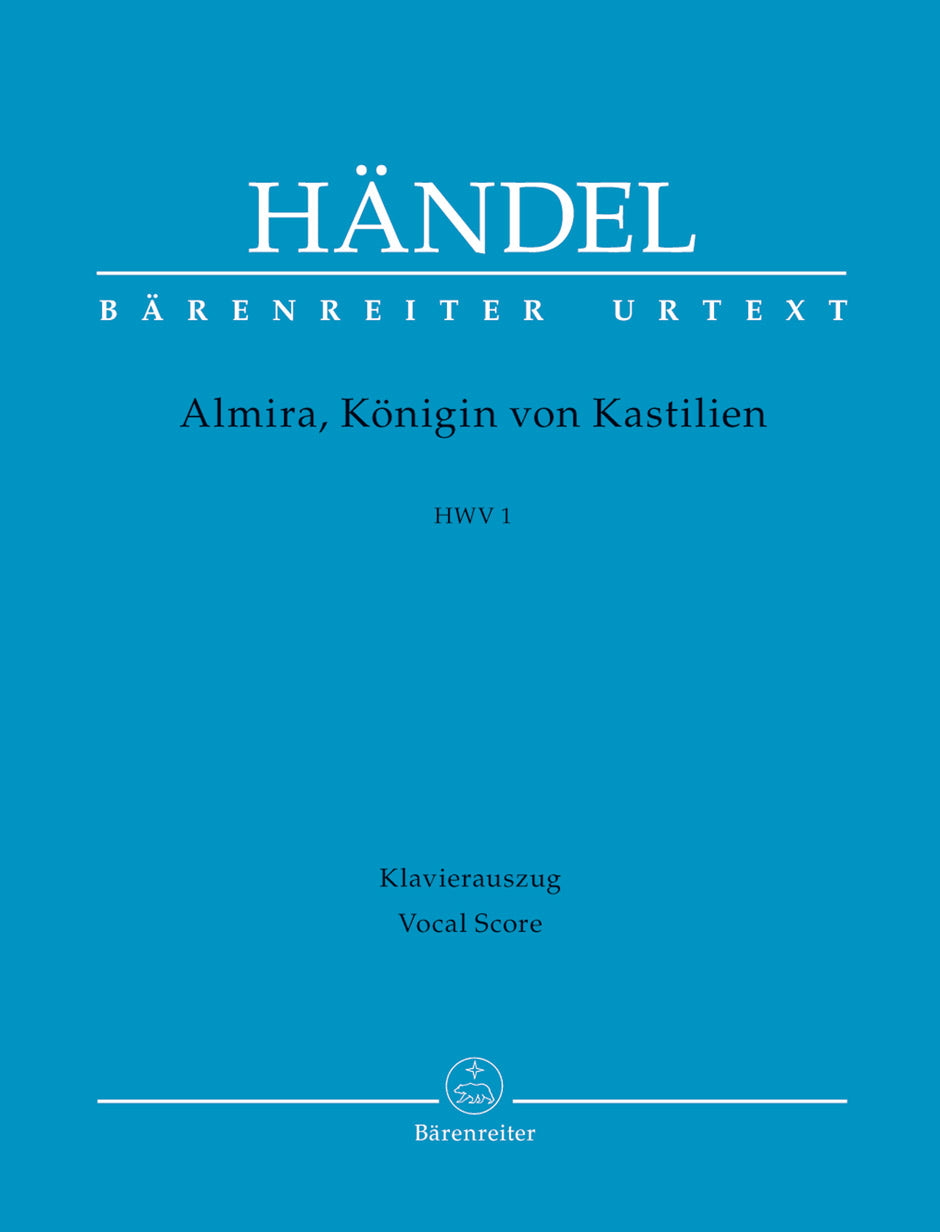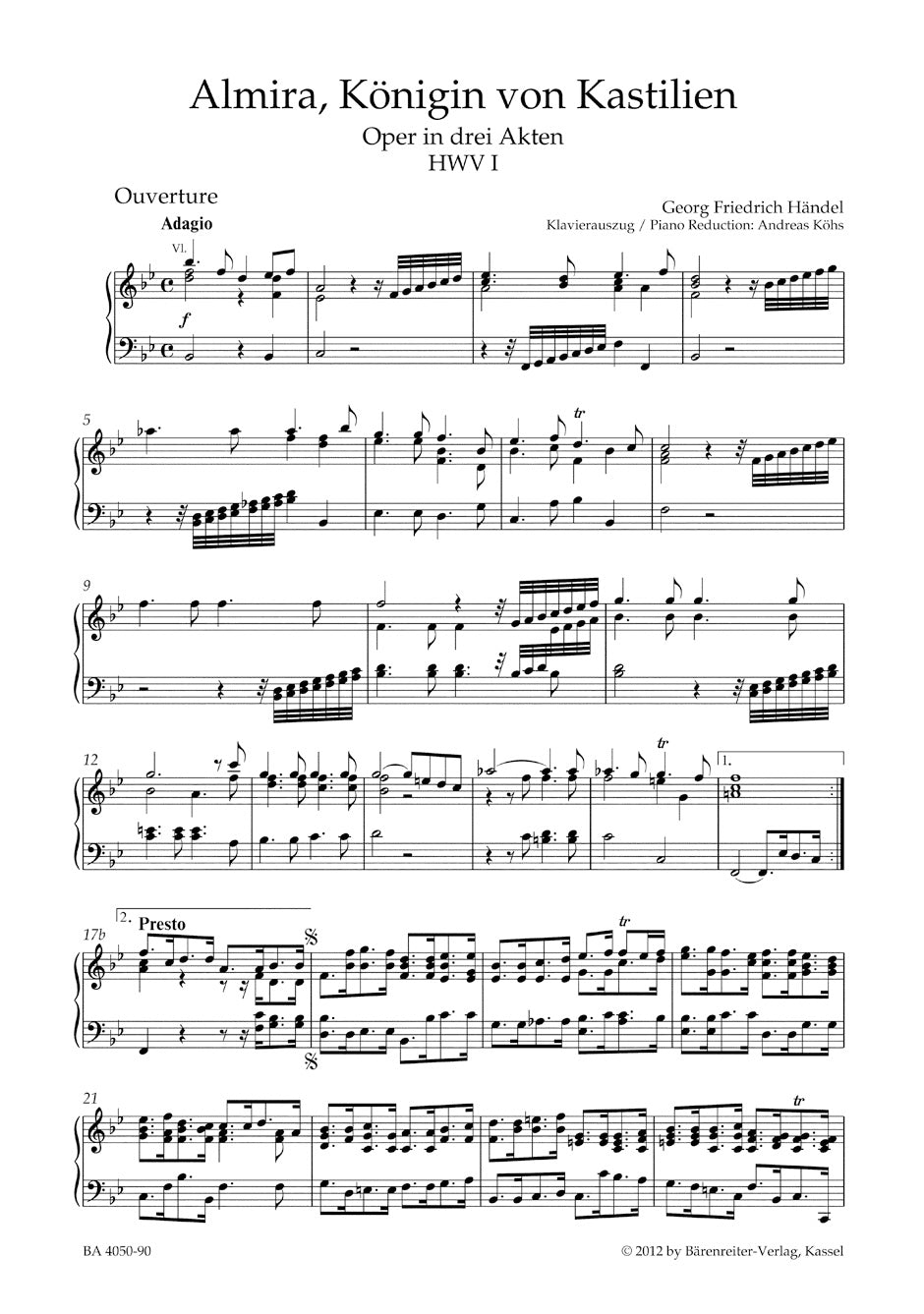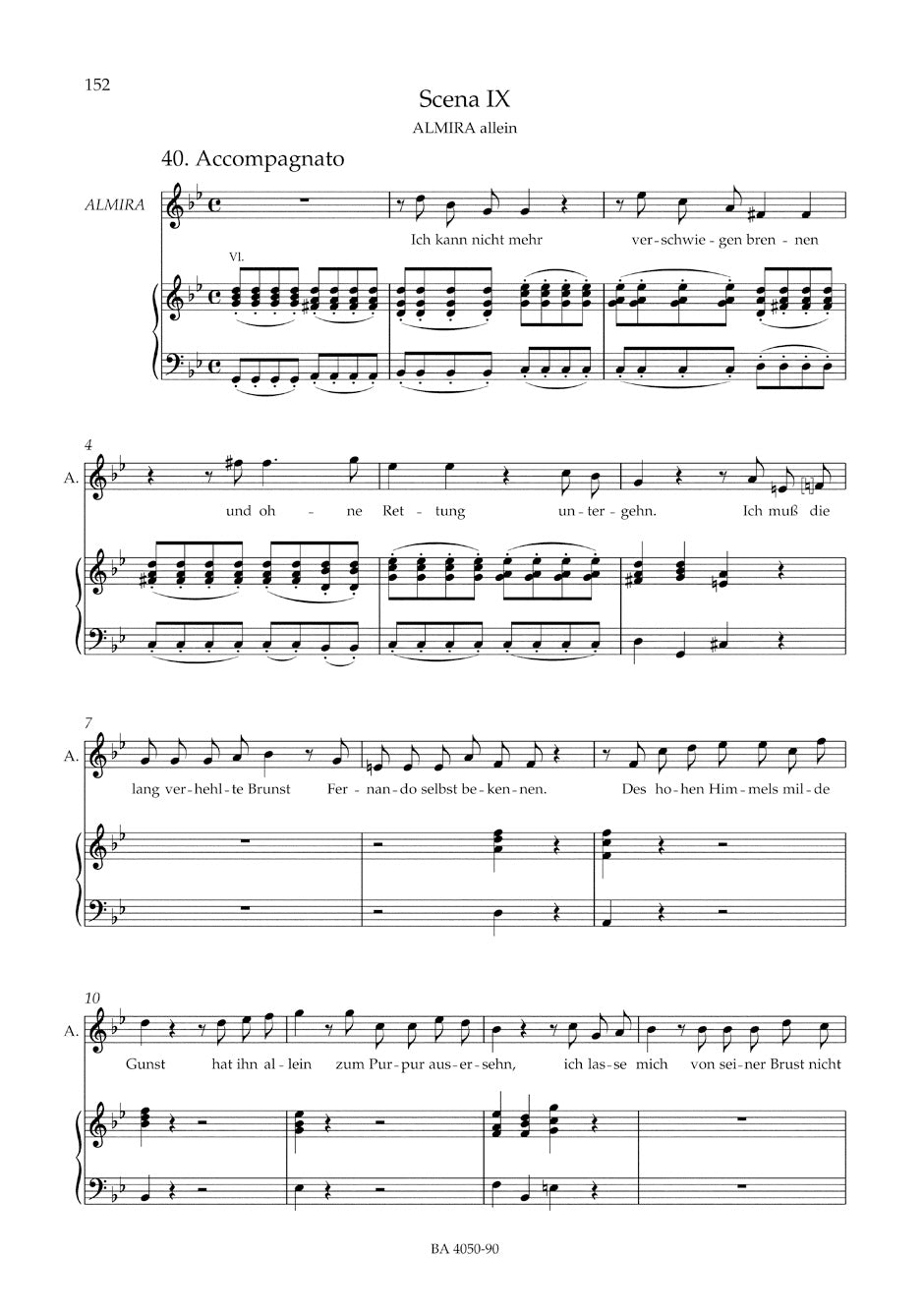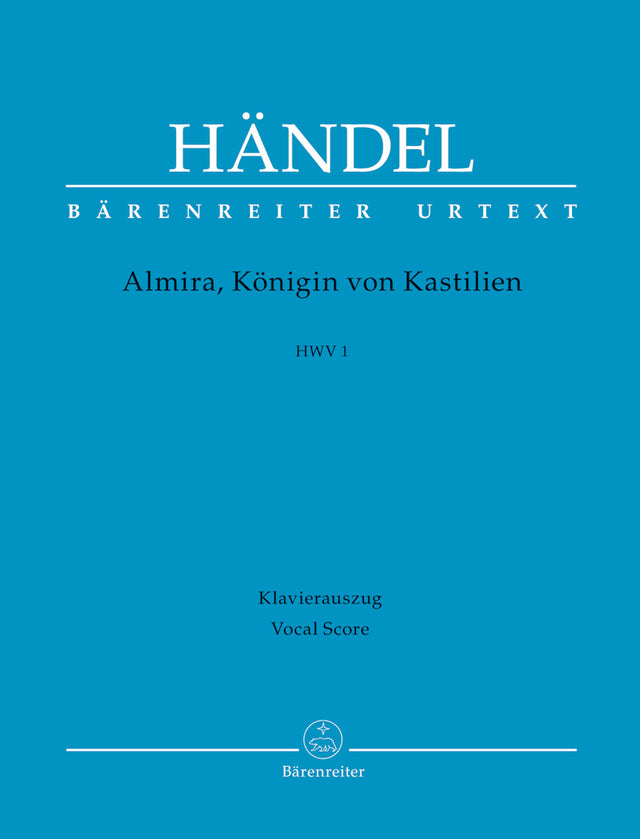Handel: Almira, Königin von Castilien, HWV 1
Expected to ship in about a week.
- Composer: George Frideric Handel (1685-1759)
- Format: Vocal Score
- Instrumentation (this edition): Piano Reduction, Voice
- Originally for: Opera
- Work: Almira, Königin von Castilien, HWV 1
- Work Languages: German, Italian
- ISMN:
- Size: 7.5 x 10.6 inches
- Pages: 280
- Urtext / Critical Edition
Description
"Almira", Handel's first opera, was well received when premiered in 1705 at the Theater am Gänsemarkt in Hamburg. The director was Reinhard Keiser, who, remarkably, had himself already set Friedrich Christian Feustking's text to music. The role of Fernando was sung by Johann Mattheson. The translation used by Handel leaves several Italian arias in their original language, resulting in a delightful mixture of German and Italian.
The opera which, after sundry entangled romances, ends in the wedding of three couples, is characterised by exuberant scenes: the procession at Almira's crowning ceremony, a duel, a prison scene and a masked-ball involving the three continents Europe, Africa and Asia.
The vocal score to "Almira" by George Frideric Handel brings about a small sensation: Whilst conducting a reenactment of this work in 1732, Georg Philipp Telemann removed the Aria No. 28 "Ingrato, spietato" from his conducting score. Since then this aria has been deemed lost. Due to necessity only the edited vocal text devoid of any music was presented in the 1994 volume of the "Halle Handel Edition".
Thanks to a recently discovered contemporary manuscript copy from the beginning of the 18th century which was found in the music library of the Mariengymnasium in Jever, this aria has now been made available to performers for the first time in this new vocal score edition. Previous to this the corresponding pages could only be seen as a facsimile in an article of the "Göttinger Händel-Beiträge".
Now the aria can be performed again. Furthermore, with the help of this new source, missing measures in the basso continuo which had initially been completed by the editor of the "Halle Handel Edition" volume, could be reconstructed from the basso continuo part of the Bellante aria "Ich brenne zwar" (No. 71). - Urtext edition based on the "Halle Handel Edition"
Publishers use a lot of words to describe what they sell, and we know it can be confusing. We've tried to be as clear as possible to make sure you get exactly what you are looking for. Below are descriptions of the terms that we use to describe the various formats that music often comes in.
Choral Score
A score for vocalists that only contains the vocal lines. The instrumental parts are not there for reference. Generally, cheaper than a vocal score and requires multiple copies for purchase.
Facsimile
Reproductions of the original hand-written scores from the composer.
Full Score
For ensemble music, this indicates that the edition contains all parts on a single system (there are not separate parts for each player). In larger ensembles, this is for the conductor.
Hardcover
Hardbound. Generally either linen-covered or half-leather.
Orchestral Parts
Similar to a wind set, this is a collection of parts. In the case of strings, the numbers listed are the number of copies included, though generally these are available individually (often with minimum quantities required).
Paperback
When publishers offer multiple bindings (e.g. hardcover) or study scores, this is the "standard" version. If you're planning to play the music, this is probably what you want.
Performance / Playing Score
A score of the music containing all parts on one system, intended for players to share. There are not separate parts for each player.
Set of Parts
For ensemble music, this indicates that there are separate individual parts for each player.
Solo Part with Piano Reduction
For solo pieces with orchestra, this is a version that contains a piano reduction of the orchestra parts. For piano pieces, two copies are typically needed for performance.
Study Score
A small (think choral size) copy of the complete score meant for studying, and not playing. They make great add-ons when learning concertos and small chamber works.
Vocal Score
A score prepared for vocalists that includes the piano/organ part or a reduction of the instrumental parts.
Wind Set
For orchestral music, this is a collection of wind and percussion parts. The specific quantities of each instrument are notated.
With Audio
In addition to the printed music, the edition contains recordings of the pieces. This may be an included CD, or access to files on the internet.
With / Without Fingering (Markings)
Some publishers prepare two copies - a pure Urtext edition that includes no fingering (or bowing) suggestions and a lightly edited version that includes a minimal number of editorial markings.





